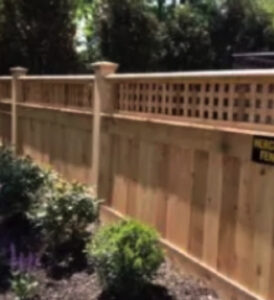
If you’re looking for ways to tackle fence cleaning, especially if you’re opposed to power washing, read on!
Your fence is a valuable part of your home security strategy, offering protection from trespassing, theft, vandalism, and (depending on the type of fence), even shielding your family and belongings from prying eyes. A properly installed, well maintained fence can provide decades of protection while also increasing your curb appeal and home value. The key here is that your fence needs to be maintained. This is especially true of wood fences, which if left unprotected, can succumb to weather, rot, and insects, but is generally true of every fence to one degree or another. Part of maintaining your fence is cleaning it. If you’re looking for ways to tackle fence cleaning, especially if you’re opposed to power washing, read on!
Call 877-959-3534 for a Fence Quote!
Start By Inspecting
From a distance, what you’re looking at could be dirt, but if you get up close, you may see that it is something else. In the best case scenario, it is just dirt and you can simply wash it away using these tips. In other cases, however, you may find that what you’re looking at is actually mildew, rot, insect damage, or even rust stains from the hardware (bolts, screws, etc) in your fence. In those cases, more care and attention might be needed than you are prepared to give – and in the cases of advanced rot, you may need a contractor to come out and replace parts of the fence.
Get The Right Cleaner
In some cases, you can simply use some dish soap and water to scrub the dirt off of your fence. If you’ve found that the “dirt” is actually mold, mildew, or algea, you can head to the hardware store for a cleaner that can do the job. While you’re there, you may find that they sell deck and fence cleaner that is designed for dirt as well – that is an option if you think you need a little more cleaning muscle than simple soap.
Call 877-959-3534 for a Fence Quote!
Protect Your Plants
Take time to protect the plants around the fence before you start washing. Depending on the chemicals you’re using to clean, spraying them on the plants may actually kill them.
Spray And Scrub…Or Sand
If you’re washing your fence with a cleaning agent, your best bet is to spray it down, let it sit for a few moments and then scrub it. Having the right tools can help (a course bristled outdoor broom or a scrub brush on a long handle, for instance), but this is still going to be difficult, physical work. Alternatively for your wood fences, you could sand the areas that have staining to remove that layer and then cover the whole thing with a new coat of paint or stain.
Call 877-959-3534 for a Fence Quote!
The post Wood Fence Cleaning Tips appeared first on Hercules Fence.